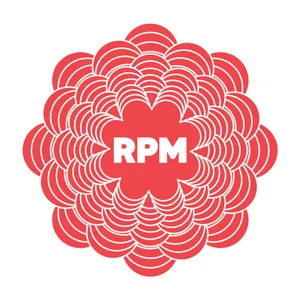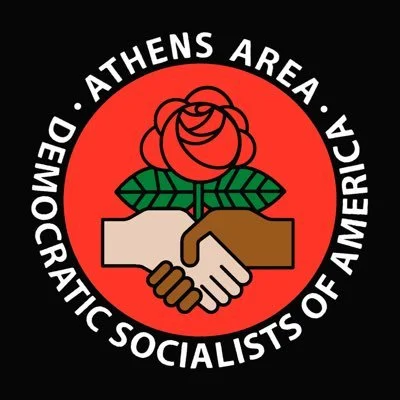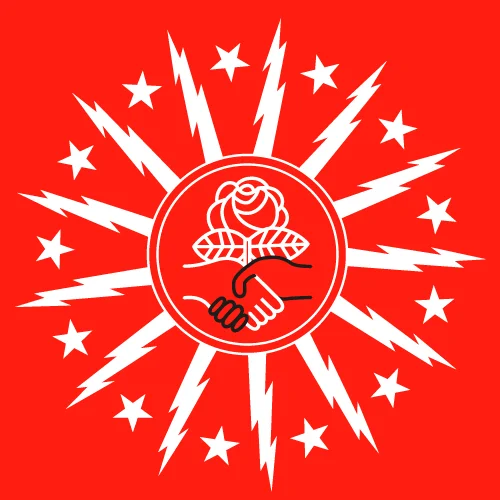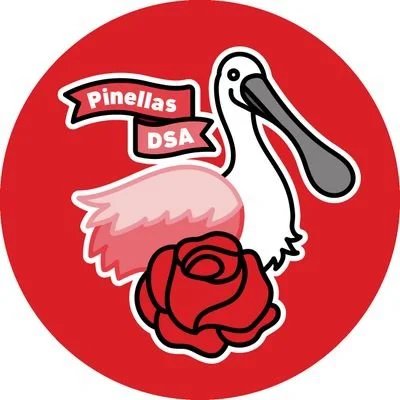

Over One Hundred Colorado Residents Attend Public Hearing on Xcel’s Electric Resource Plan Demanding a Just Climate Transition
On Dec. 2, more than 100 people registered for a Zoom call hosted by the Public Utility Commission to hear what the public thought of Xcel’s 10-year plan. Scheduled to end at 6 p.m., the event ran well past 7.
Of the dozens and dozens who spoke, only four supported Xcel’s plan. The rest of us called it out for what it is: greenwashing.

Xcel boasts that their “Landmark electric resource plan would cut carbon emissions an estimated 85% by 2030.”
The problem with that target is that it’s too late. The Biden administration’s national goal is 100% carbon-free electricity by 2035; Gov. Polis’ target is 100% renewable energy by 2040. Denver, Boulder, Pueblo, Fort Collins, Longmont, Golden, Summit County, Lafayette, Frisco, Aspen, Glenwood Springs, Nederland, and Breckenridge each have set 100% renewable electricity targets by 2030 or 2035.
We’re already in the midst of a climate crisis. We’re feeling it first-hand with the record-setting heat waves, wildfires, mudslides, droughts and air pollution.
Xcel missed its window of opportunity to help avert climate catastrophe. Now the question is, how bad will we allow it to get?
To stave off the worst of the worst, community members overwhelmingly called for the following changes to Xcel’s plan:
Close all coal plants, especially the Comanche Coal Plant, the state’s dirtiest, most unreliable and expensive source of energy, by 2030 at the latest.
Do not pass on the cost of the Comanche Coal Plant to ratepayers. This coal plant was built in 2010 and it was largely opposed then. It was a bad investment that Xcel Energy needs to take responsibility for. The general public already is paying the price with our health and the challenges of an increasingly hostile climate.
Close the Arapahoe and Cherokee gas plants by 2030. Like the Comanche Coal plant, these have been polluting the air of its nearby mostly Latino, working-class neighborhoods, contributing to our severe ozone issue and of course climate change.
Set a 100% renewable electricity goal by 2040 at the very latest — to align with Colorado targets.
The outpouring of support for these demands has been overwhelming. The hearing on Dec. 2 featured voices ranging from ski industry representatives concerned about shrinking ski days, to local business owners wanting to purchase clean electricity, to indigenous leaders highlighting the devastation coal and gas brings to the land and their communities, to parents angry about the planet on which we’re raising, and eventually will pass along to, our kids.
A strong majority of Pueblo residents (30 opposing Xcel’s plan, 7 neutral and 8 in favor) spoke out at an earlier public hearing in October. More than 1,000 residents have submitted written comments to the same effect.
Xcel Tries Striking a Backdoor “Settlement”
This surge in public participation prompted Xcel to have work behind closed doors with the city of Boulder and Denver and other parties to devise a counter-offer.
Originally the plan was to run the Comanche Coal plant until 2040. In this new deal, that closure date would be moved up to 2035. It would also pass on some of the cost of the bad investment to us ratepayers.
At the Dec. 2 statewide hearing, however, we residents made clear that 2030 is the hard line for closing those coal- and gas-fired plants. We can’t have Xcel making closed-door deals that undermine the strong public consensus on this.
This post was taken largely from EcoSocialist Chair Clayton Dewey’s op-ed in the Colorado Sun, with his permission.


End the Embargo




Statement from the Buffalo DSA Steering Committee on Bowman Expulsion
Over the past few months, a situation involving the calls for expulsion of Rep. Jamaal Bowman has brought to light a series of organizational issues that we should not be distracted from, namely:
- How do we seek to build DSA as a Socialist membership organization with commitments to our democratically decided principles?
- How does our national political leadership (NPC) carry out that will?
The first issue speaks to the long-standing electoral approach that embodies much of DSA’s strategy, past and present. Electoralism alone is not a solution to our struggle, but a necessary component when applied carefully. The endorsement of Rep. Bowman has exemplified a set of problems with our electoral approach. First, the premature endorsement of candidates who are not tied to the organization in a meaningful way, and in turn their subsequent connection to the Democratic Party once elected, which places us in a precarious situation. These issues have consistently allowed for careerist and opportunistic behavior to flourish, relegating DSA to a mere mobilizing branch for vague progressives that attach us to the Democratic Party, as we attempt to horse-trade for watered-down reforms. What ought to be clear is that both the Democratic and Republican parties are our enemies. Such as here in Buffalo where the attempt to unseat a local Democratic Party leader was met with vicious reactionary politics from the Democratic Party itself, and a joining of hands with Republicans and conservatives. Moving from Local/State level to the Federal level we see these contradictions are even greater. This should give us serious pause about issuing endorsements to candidates such as Rep. Bowman who we have little to no reason to put out support behind. Vague progressive values are abundant, socialists with principles tied to our organization and a working class base less so. Second, the issue this also addresses is the nature of DSA – its size, its influence, and its relation to a fighting labor movement necessary to extract concessions from the capitalist class. As James Connolly put it:
“a socialist political party not emanating from the ranks of organized labor is, as Karl Marx phrased it, simply a socialist sect, ineffective for the final revolutionary act, but that also the attempt of craft organized unions to create political unity before they have laid the foundation of industrial unity in their own, the economic field, would be an instance of putting the cart before the horse.”
This issue has long burdened DSA since its foundation as little more than an organization to “push the Democratic Party left”. The premature – and often questionable – focus on electoralism has always been a series of contradictions that we will not overcome with candidates such as Rep. Bowman. This does not mean we should reject any electoral approach altogether, but that we must be more decisive and develop more consistency with our principles. We are happy with the NPC’s decision to develop a Socialists in Office committee, and to bolster our electoral standards at minimum. Serious thought should be put into the weaknesses of a horizontialist approach that deems any vague progressive candidacy useful to building Socialism. Though none of us are members of the Marxist Unity Group, we endorse their call for the following requirements to our electoral standards:
- The candidate must be a member of DSA.
- They must accept and pledge to promote and fight for the DSA national political platform if one is passed.
- If the campaign is successful, any staffers hired by the legislator will also be subject to the first two requirements.
- Legislators must agree to at least quarterly meetings with DSA leadership of the appropriate designation: for example congresspeople would meet with the National Political Committee, state legislators would hold meetings with leadership of all state chapter leaders (or leadership of a state/regional body if one were created), city councilors would have meetings with local chapter or branch leadership, etc.
- All DSA members in legislatures must form a caucus that votes as a block and rejects de facto discipline from any other party caucuses, regardless of which ballot line they were elected on.
To the second major issue, we are seeing a genuine problem with our national political leadership. The decisions of the NPC – the majority we should say – throughout this process have been dismaying and counterproductive. The lack of conviction to even censure Rep. Bowman illustrates as much. We also cannot help but notice that a level of secrecy in these discussions occurred that leads to reasonable doubts about the integrity of the decision making process. Additionally, the subsequent response to reign in the BDS & Palestine WG has also been an issue of concern. Though the NPC is the highest decision making body elected to carry out our political aims in-between conventions, the NPC’s disregard on our democratic commitments to Palestine, and the move to effectively censor the BDS & Palestine WG shows a vulnerability in our organizational coherence. We do not support this decision, even as we also have criticisms of BDS & Palestine WG’s decisions and level of independence, we have signed on in support of their statement of dissent. The Buffalo Chapter of DSA has voted in overwhelming support on the issue of Palestine and dissent on retaining Rep. Bowman as a representative of our organization. As leadership we see it fit that we should convey our resolve to uphold that message. The NPC has failed to act in the best interest of our organization’s democratically decided principles, and instead has demonstrated a vague strategy in supporting an elected representative who has not demonstrated the tenacity of a socialist in office. While we understand the weight and difficulties that the NPC is being presented with, we find it necessary to convey that this does not absolve the NPC of due criticism.
Furthermore, and most troubling of all, the revelation that an NPC member threatened to split and denounce DSA as a racist organization for upholding our principles of support for Palestine is particularly egregious and cannot be ignored. Whomever this NPC member is, we cannot have confidence in their leadership much less the NPC’s integrity as long as this behavior goes unanswered. We ask that this NPC member be made public to DSA membership, and that they resign from national leadership on grounds of malfeasance.


Thoughts on the Use of the Word “Privilege”

By Pinellas DSA Member Bruce Nissen
Progressive and leftist discussions and memes these days commonly employ the word “privilege.” In fact, I’m hard pressed to think of another word more frequently used. The term is intended to educate those of us who do not face the types of discrimination or unfair treatment against certain groups that is regrettably so prevalent in the U.S. today.
The most common usage of the term is “white privilege” or “white skin privilege,” referring to the long and deeply institutionalized racial discrimination against African Americans and other people of color compared to lighter-skinned European Americans. But the term can also be used to point out the superior position society places some groups compared the less-favored categories: “male privilege” over females; “ableist privilege” over those with a handicap; “heterosexual privilege” over LGBTQ populations; and the like. In this essay I will only be discussing white privilege, although the arguments I develop can be equally applied to other types of labelling people as privileged.
Before directly addressing examples of the usage of “white privilege” rhetoric, I want to cover a few basic principles we need to adhere to if we wish to be persuasive in getting people with backward or socially harmful attitudes to change their perspective. First, our goal as Democratic Socialists must be to build a powerful working-class movement composed of all races, genders, sexes, sexual orientations, etc. to confront and defeat what are commonly referred to as the one percent, the capitalists, or the corporate elite. This movement must oppose all the discriminatory “isms” both because we are fighting for a society where they no longer exist and because movements divided along racial, or sexual or other lines historically fail.
Second, we want to choose the rhetoric that is most likely to lead to the change we seek. For example, anti-racist rhetoric is wisely chosen if it leads to a reduction in racist attitudes and practices. Rhetoric that fails to achieve this, or that may even reinforce racism in all its variants is to be avoided. The goal is to achieve results; all other objectives must be secondary.
Our rhetoric should help to build the most powerful and widely shared common front against the evil we are addressing, in this case racism. Rhetoric that alienates potential allies in the fight against racism should be avoided, while rhetoric that shows the common interests of all those who would benefit from reducing and ultimately eradicating racism should be our first choice.
While the above points are true, our rhetoric should also be truthful and accurate. It should not water down or cover up existing evil racist practices in the interest of maintaining friendly relations with everybody. To do that would be to abandon the goal, which is to reduce and erase racism in all its many forms. In other words, our rhetoric must “keep it principled” and maintain an unwavering focus on the evil we are combatting.
With these criteria in mind, I want to examine the current propensity of progressive and leftist producers of memes and analyses to use the language of “privilege” in attempts to combat racism. From the beginning, let me acknowledge that the language of white privilege is used in a wide array of ways, some with more nuance than others. A short essay like this cannot possibly get into all these differences between these different usages of the term. Perhaps a few who use the term white privilege do not fit the depiction I will be giving here, but I believe the more widely shared and popular usages of white privilege analysis fit the mold I will be portraying.
One thing that all proponents of white privilege share is that they wish to focus intently on the differences between those who are treated in a racially discriminatory manner and those who are not. They correctly perceive a widespread tendency among white U.S. residents to downplay, ignore, or even not be fully aware of the extreme differences in the way our society treats white folks and black folks or people of color in general. They also (correctly) know that the life prospects of whites versus non-whites in the U.S. overwhelmingly negatively affect the non-whites. The tragic loss of human potential and even to some degree loss of being treated with dignity or as a fully human being is evident, and the desire of white privilege proponents is to force white people to acknowledge and confront this reality.
The above sentiments are laudable, and I fully share the sentiment that the reality of institutional (and of course attitudinal) racism must be squarely faced and combated. However, I have a problem with the usage of the word “privilege” to describe all such racially discriminatory practices. What is the source of my objection?
Let’s examine the meaning of the word “privilege.” Dictionary.com defines privilege as 1. a right, immunity, or benefit enjoyed by a particular person or a restricted group of people beyond the advantages of most: the privileges of the very rich.
2. the unearned and mostly unacknowledged societal advantage that a restricted group of people has over another group: white privilege based on skin color; male privilege; children of privilege.
Both definitions point to a privilege as something given to people that they did not earn. The implication is that it is something they do not deserve. It should be taken away from them if we want to be fair or just. While that is not explicitly stated in the definitions, it is a strong implication to most people if they hear the word “privileged.” Applied to oneself, being called “privileged” is inevitably pejorative; it is something to be avoided or is something that is disapproved. Think of our attitude toward a young adult born into the lap of luxury whose parents bought them the best private schooling from kindergarten through an elite college like Harvard or Princeton (admission gained through a large donation to the college). We consider them privileged, and believe their treatment compared to an individual born into average circumstances to be unjust. The struggle for a better world includes ending such privileges: take away their unfair advantages.
Now consider the practice of labelling all white people by describing them as having white privilege. An average working-class white person is very likely to hear this as an attack upon him/her: they hear that they have undeserved privileges that probably should be taken away from them. They are likely to no longer listen to whoever made the accusation against them, insisting that they worked hard for whatever they have gotten, etc. This is not a good scenario for uniting people in a struggle against racism.
Even for those (relatively few) white working-class people who do not react defensively, the “white privilege” message is not productive. If they accept that they are privileged because their skin is white, this is a very dis-empowering message. It is highly unlikely to spur them into anti-racist action. Since their skin color is beyond their control, there is little that they can do to correct the situation. The white privilege analysis is very similar to the Christian doctrine of “original sin” — it is a deficiency that one is born with; it is beyond your control. The best that one can do is live with this undesirable condition (“whiteness”) and accept one’s unworthiness and inability to challenge what cannot be changed. The best that one can do is to realize one’s unworthiness and submit to the dictates of those not tainted by whiteness. This means unquestionably following the leadership of whoever is (falsely) considered the unquestioned leader of a unitary conflict-free non-white community that has no class distinctions within it. (No such community exists; like all communities the African American (or any non-white or non-advantaged) community is riven with class and other distinctions that lead to different interests and therefore political programs.)
The white privilege analysis is equally dis-empowering in non-white groups. Its focus is on victimhood within minority populations. A non-white person is offered few or no powerful or majoritarian opportunities to combat unequal treatment since most of the population is alleged to be permanently advantaged by the system simply based on their skin color, and therefore has an interest in perpetuating racism and discrimination.
Consider the situation of the following four people and how the white privilege analysis relates to each:
A. George is a white man born into a multi-millionaire family; his grandfather and father were both U.S. Senators and his father even became U.S. president. Despite his being a poor student his father bought his way into an Ivy League University and gave him tens of millions of dollars-worth of stock in Texas oil companies. George later becomes President of the U.S. (Think of George W. Bush).
B. Henry is a white man born into a poor family. His father worked as a janitor who faced frequent layoffs, while his mother had unstable jobs as a cashier at various gas stations. From age 8 up Henry was home alone frequently because both parents were working 2nd shift simultaneously. A mediocre student, Henry left high school and drifted through a few jobs until he landed on his current job as a road crew member in a non-union construction outfit. He supports a wife and two young children on wages that put the family right at the U.S. poverty line.
C. Emily is an African American woman who was raised in a solidly middle-class family; her father was a city administrator, and her mother was a public-school teacher. Emily went to the state university and is now Executive Vice President of a social welfare agency at an income of $110,000/year. Her husband is a lawyer working for the ACLU. Their combined family income approaches $200,000 per year.
D. Camille is an African American woman in her late 20s. She was raised by a single mother in poverty and unstable circumstances. Camille became pregnant at age 17 and ended up with a child but no adult partner. She has struggled to attain a stable life, and with the help of extended family caring for her 10-year-old daughter, she has just earned a GED high school degree and is working at an entry level office job, earning $21,000 a year.
Who among the four individuals detailed above deserves to be labeled as privileged? I would argue, only George. Here is a man given many unearned and undeserved privileges, and the world would indeed be better off if they were taken away from him and redistributed to those born into less favorable circumstances. But the white privilege analysis argues that Henry should also be accused of being privileged. Let’s examine the basis for this claim.
Henry lacks the generational wealth advantages and the “zip code” advantages that clearly privileged individuals like George possess. These types of advantages, which are clearly structural and systemic and full of obvious racial dimensions, are clearly absent from Henry’s life.
Yet according to the white privilege analysis, Henry is privileged because he will not face the possibility of being pulled over by policemen for a broken tail light and possibly killed; because he will not likely face the prospect of being beaten by cops for loitering on the street; because he will not face the possibility of being call the “n” word and being treated as less than human because of the color of his skin; because he will not face housing discrimination due to the color of his skin, because. . . we could go on and on with a list of the mistreatment Henry is not likely to face simply because his skin is of a certain color.
And all of that is true: Henry will not face these forms of mistreatment. But does not being mistreated mean that one is privileged? Is it a privilege to be given human rights? To me, receiving basic human rights should be considered a right, not a privilege. And no one will bristle and act defensively if they are told they have basic human rights, even if they are told that others are denied those same rights.
Upholders of the white privilege analysis believe that my analysis above will allow white people to downplay or ignore the racist treatment (institutionalized in major ways throughout U.S. society) of people of color? In their view, isn’t it necessary to accuse white people of having white privilege if we are to get them to own up to the deep racism carved into our society?
I don’t think that is the case. We can in fact get people (including white working-class people) to recognize and acknowledge the deep racism of our society and draw their attention to racist treatment of non-white folks without using the term “privileged” with all its disadvantages.
If we tell white U.S. citizens (particularly working class U.S. citizens who are white) that they have many human rights (we shouldn’t go overboard and say ALL human rights, as many poor and working class whites are also denied many such rights due to inability to “pay” for them), AND THAT MANY OF THEIR FELLOW CITIZENS ARE DENIED THESE SAME RIGHTS SIMPLY BECAUSE OF THE COLOR OF THEIR SKIN, we can then press the case for solidarity to extend those rights to all. That is not whitewashing or minimizing the deeply racist nature of current U.S. society. We can in fact press the case that all of us except the few who benefit from dividing us have a real material interest in combating racism and similar divisive doctrines.
For those who are cynical about such a “human rights — solidarity” message resonating with most white U.S. citizens: think how much harder it will ever be to get a receptive ear to accusations that they are privileged (implying they should lose their presumably unjustified advantages over people of color). The privilege language will immediately shut down receptivity to our anti-racist message. In fact, it is likely to drive a certain percentage of white working-class individuals right into the arms of Donald Trump and his ilk. It is also a dis-empowering message that at best will encourage apathy toward attempts to build a strong united working-class movement to combat all forms of discrimination and bigotry as well as class exploitation and extreme inequality.
Recall the criteria laid out earlier in this piece for effective anti-racist rhetoric. It should be language that is most likely to lead to our goal of decreasing and ultimately eradicating racism. And it should be most conducive to building a powerful and wide united front of all who have a stake in reducing racism. And it should not ignore or downplay the degree of racism in our society. I believe the “human rights — solidarity” framework is much more congruent with these criteria than are accusations to white working-class people that they are privileged. Let’s start using a more effective language!
(I want to acknowledge the incisive feedback and comments of Sean Armil on an earlier version of this essay. He is not responsible for any of its arguments — only I am — but it is much more sharply focused and clear thanks to his commentary.)


One Member, One Vote


The Gift of a Union: RPM Holiday Special!
It’s never been easy to be a front-line retail or customer service worker at the holidays, and with a dramatic surge in COVID cases affecting New York City, this year is even harder. For our Revolutions per Minute holiday special, we’re joined live by Eric Dirnbach of the Emergency Workplace Organizing Committee, DSA’s national project in partnership with the United Electrical, Radio, and Machine Workers of America, as well as Aria, a retail worker who participated in a successful strike last year at the Good Vibrations sex shop in Massachusetts with support from EWOC.
Plus, a special correspondent, Shen, visits the picket line in Chinatown to speak with Liang, a restaurant worker at the historic dim sum restaurant Jing Fong.
We are fundraising for the WBAI end of year Tower Fund with some help from our NYC-DSA chorus, Sing in Solidarity. Give to the Tower Fund at towerfund.wbai.org and follow our chorus on Twitter @nycdsachoir.
Sign the petition to support Jing Fong workers and stop displacement in Chinatown at bit.ly/stopdisplacement.
Are you a retail or service worker looking for support organizing your worksite? You are not alone. Support and help is available. Visit https://workerorganizing.org/support/.


Hold the Line: Campaigns for Justice in 2022
2021 has been another incredibly tough year, with the pandemic and climate crisis exacerbating income inequality and dire living situations for working class people across the globe.
Tonight we’ll catch up with a few DSA working groups to talk about the organizing they’ve done to build working class power and solidarity this year and what’s coming up for 2022. Our guests tonight are Joel from the BDS and Palestine Solidarity Working Group on the Boycott Puma campaign and the power of a consumer boycott, Emma Claire from the Healthcare Working Group on universal healthcare and labor rights for home health care workers, and Josh and Robert from Eco-Socialists on the Green New Deal for Public Schools and the New York Public Power campaign.
To learn more or get involved with NYC-DSA's eco-socialist organizing, visit https://ecosocialists.nyc/join-us/.
Find NYC-DSA's Healthcare Working Group on Twitter or Facebook @NYCDSAHealth or email the organizers at healthcare@socialists.nyc.
Curious about the BDS movement and DSA's Palestine solidarity work? View the primer and FAQ: https://palestine.dsausa.org/palestine-and-bds-faq/.
Throughout this episode and all our remaining 2021 episodes, we are fundraising for WBAI's rent on the transmitter at 4 Times Square. We encourage all who are able to donate what they can, even a small amount, toward this important community institution. Visit towerfund.wbai.org to give.


American Democratic Socialism – An Interview with Gary Dorrien


For the Love of Bushwick with Samy Nemir Olivares
*and Cypress Hills, and Ocean Hill!
Believe it or not, 2022 is right around the corner and will bring with it a new electoral cycle and a new slate of DSA-endorsed socialist candidates for office. On tonight’s show, we kick off our series of interviews with NYC-DSA’s 2022 slate as we speak LIVE with Samy Nemir Olivares, candidate for Assembly District 54 in Bushwick, Cypress Hills, and Ocean Hill. Hear from Samy on their experience as a community organizer in North Brooklyn, the radical legacy of queer and trans people of color, the next steps for socialists in Albany, and smashing gender binaries right alongside capitalism.
We also speak to Gabriel Hernandez of NYC-DSA’s Queer Caucus on building queer community and mentorship for socialists. Finally, we hear a brief update on the struggle for free, equitable higher education for all from the New Deal for CUNY coalition.
To learn more about Samy Nemir-Olivares and support his run for Assembly, visit: https://www.samyfornewyork.com/
To learn more about NYC-DSA’s Queer Caucus, sign up for their mailing list here: https://actionnetwork.org/forms/queer-caucus-interest-form
For more on the December 11 action for a New Deal for CUNY, visit: https://psc-cuny.org/SatDec11